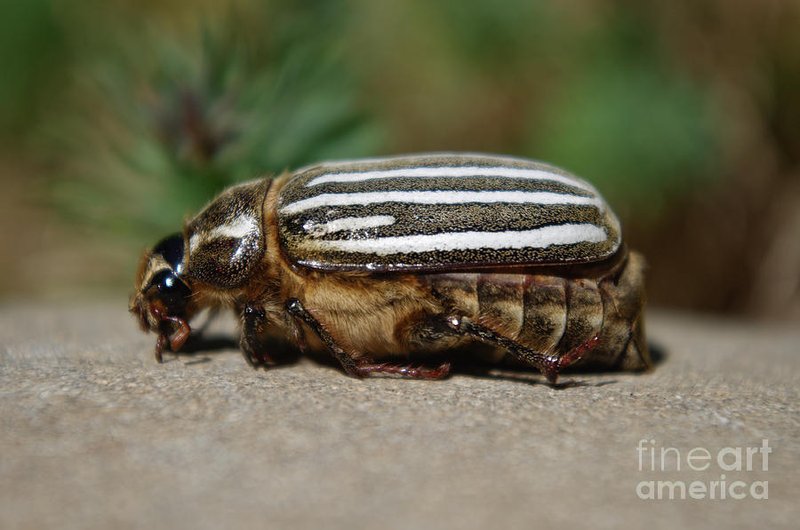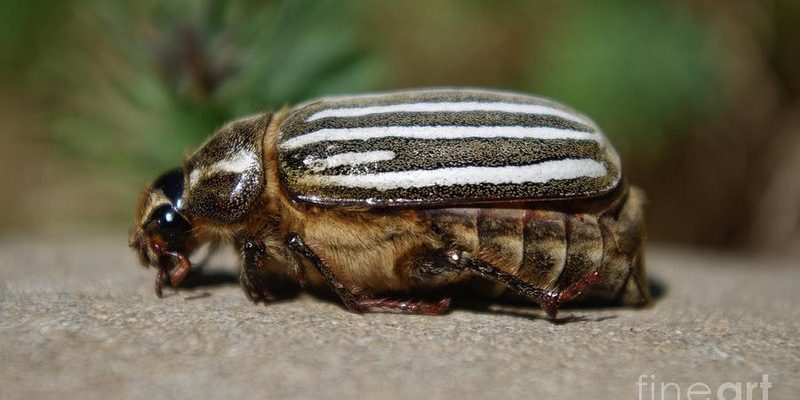
When you think of summer evenings, the warm air, the chirping of crickets, and the twinkling stars might come to mind. But there’s something else that often joins the symphony of sounds—the June Bug. These little creatures might not always be the stars of the show, but they have a fascinating life that’s worth exploring. Whether they’re bumping into your porch lights or scurrying through your garden, June Bugs bring a certain charm to the summertime.
So, what exactly is a June Bug? In simple terms, it’s a common name for several species of beetles belonging to the family Scarabaeidae. These critters are often seen from late spring to early summer, hence the name. They might seem like just another bug, but they have a unique life cycle, playful behaviors, and important roles in our ecosystem. Let’s dig deeper into this intriguing insect.
What are June Bugs?
June Bugs, also known as June beetles, represent over a hundred species in North America alone. They are typically recognized by their shiny, brownish-green bodies, which can vary in size from about half an inch to an inch long. Their distinctive shape often resembles a small, rounded beetle, and their hard exoskeleton gives them a rather robust appearance. These creatures are most commonly spotted during the warmer months, particularly in June, hence their catchy name.
Adult June Bugs are mostly nocturnal, meaning they come alive at night. They are attracted to light, which is why you might find them buzzing around your porch light. You might be wondering if they’re harmful. Generally, they don’t pose any threat to humans. However, their larvae, which are known as grubs, can be a nuisance to gardeners as they feed on the roots of grass and other plants.
Life Cycle of a June Bug
The life cycle of a June Bug is a fascinating journey that unfolds in four distinct stages: egg, larva, pupa, and adult. The adult female lays her eggs in the soil, usually in late spring or early summer. The eggs hatch into larvae, or grubs, which spend their early months underground munching on decomposing organic matter, and, unfortunately, sometimes the roots of your garden plants.
As they grow, these grubs undergo several molts before they enter the pupal stage, where they transform into adult June Bugs. This stage is crucial, as it’s the metamorphosis that turns them into the familiar beetles we see flitting around in the summer. After about a year, the fully developed June Bugs emerge, ready to repeat the cycle. Isn’t it interesting how they begin their lives in the earth, only to emerge as flying beetles?
Habitat and Distribution
June Bugs thrive in a variety of habitats, including lawns, gardens, fields, and forests across North America. They prefer moist, rich soils, which are ideal for their larvae to grow and develop. You’ll often find them in grassy areas where they have access to food and a place to burrow. These beetles are found in every state in the U.S., and they tend to be more abundant in the eastern regions.
The adaptability of June Bugs is quite impressive. They can handle different environments, which has allowed them to spread across various climates. This resilience is part of what makes them such common summer visitors. If you’re curious about where they hang out, just take a stroll through any garden or park—especially in June—and you might see these little guys in action.
Interesting Facts about June Bugs
| Common Name: | June Bug |
| Scientific Family: | Scarabaeidae |
| Size: | 0.5 to 1 inch |
| Color: | Brown to greenish |
| Habitat: | Lawns, gardens, forests |
| Diet: | Leaves, flowers, and plant roots |
| Lifespan: | 1 year (approximately) |
Behavior and Diet
June Bugs are particularly known for their unique behaviors, especially during the night. Their attraction to lights isn’t just a coincidence; it’s a part of their mating ritual. Males are drawn to bright lights, where they can find females. Once they locate a partner, they engage in a dance of sorts, fluttering around in a very recognizable bumble to impress one another.
When it comes to diet, adult June Bugs have a penchant for munching on a variety of plants. They often feed on leaves, flowers, and even fruits. This can lead to some frustration for gardeners who may find their prize plants nibbled at the edges. The larvae, or grubs, are a different story; they primarily feed on the roots of grasses and vegetables, which can cause damage to lawns and gardens.
June Bugs and Their Role in the Ecosystem
You might be surprised to learn that June Bugs play an important role in the ecosystem. As decomposers, they help break down organic matter, enriching the soil with nutrients as they do so. Their larvae, the grubs, are instrumental in aerating the soil, improving its structure, and benefiting overall plant health. This makes them valuable allies for many gardeners, despite their munching habits.
Adult June Bugs also serve as a food source for various predators. Birds, frogs, and small mammals feast on these beetles, creating a natural balance in the ecosystem. The life cycle of the June Bug contributes to a thriving environment, where each stage supports other forms of life. When you see a June Bug, think of it as a tiny cog in the wheel of nature!
How to Manage June Bugs in Your Garden
If you’re dealing with a June Bug invasion in your garden, don’t worry; there are ways to manage their presence without resorting to harsh chemicals. One effective method is to introduce beneficial insects that feast on June Bug larvae. For example, nematodes are microscopic worms that can help reduce grub populations naturally.
Another approach is to promote healthy garden practices. Keeping your soil healthy can deter pests. Regular watering, adding mulch, and planting a diverse variety of plants can create a more resilient ecosystem that attracts beneficial insects while keeping pests like June Bugs in check.
June Bugs are more than just those little critters you see buzzing around at night. They have a fascinating life cycle, play significant roles in our ecosystem, and provide a glimpse into the intricate web of life around us. The next time you spot a June Bug, take a moment to appreciate its journey from grub to beetle, and remember how it contributes to the natural world.
FAQ
What are the different types of June Bugs?
There are several different types of June Bugs, with the most common being the Phyllophaga genera, which includes various species like the Phyllophaga crinita. Each of these species shares similar traits but can vary in size, color, and habitat. Some other notable types are the Phyllophaga anxia, known for its distinct coloring and behaviors. Identifying the exact species can be tricky, but generally, they all share that characteristic June Bug look!
Are June Bugs harmful to humans?
June Bugs are not harmful to humans at all. They don’t bite or sting, making them relatively harmless. While they can cause damage to plants, their interaction with people is usually limited to bumping into lights or getting caught in hair. So, don’t worry about them when you’re outside enjoying a summer evening; they’re just as curious about you as you are about them!
How can I attract June Bugs to my garden?
If you’re interested in attracting June Bugs, using outdoor lights will definitely help! Since these critters are drawn to light, setting up a porch light or garden lamp can lure them in during summer evenings. Additionally, planting a variety of flowers that bloom during the warm months can also entice June Bugs, as they enjoy feeding on nectar-rich blooms.
How long do June Bugs live?
Generally, the lifespan of a June Bug is about one year from egg to adult. They spend most of that time in their larval form, digging into the soil and munching on roots. After they emerge as adults, their role in the garden only lasts for a short while, typically during the warmer months when they’re most active.
Can June Bugs damage my garden?
Yes, June Bugs can damage gardens, especially through their larvae, known as grubs. These grubs feed on the roots of plants, which can lead to wilting and even death of your plants. However, adult June Bugs also feast on leaves and flowers, causing aesthetic damage. While they might not completely ruin your garden, it’s essential to manage their populations if they become overwhelming.
Do June Bugs have any natural predators?
Absolutely! June Bugs are part of the food chain and are preyed upon by various animals. Birds, such as robins and starlings, frogs, and even some small mammals enjoy snacking on these beetles. This natural predator-prey relationship helps keep June Bug populations in check, contributing to a balanced ecosystem.
Do June Bugs hibernate?
While June Bugs don’t hibernate in the traditional sense, they do enter a dormant stage during colder months. After mating and laying eggs, they tend to disappear when temperatures drop, spending the winter months in the larval stage underground. They come back to life when the weather warms up, typically in late spring, ready to start their life cycle anew.
What do June Bugs eat?
Adult June Bugs primarily feast on leaves, flowers, and fruits. They are particularly fond of the foliage of plants such as roses and other flowering species. Their larvae, on the other hand, consume roots and decaying organic matter in the soil. This diet plays a vital role in breaking down materials and enriching the soil, despite the occasional frustration they may cause gardeners.
Can I use pesticides to control June Bugs?
While pesticides can control June Bug populations, they should be a last resort. Many pesticides can harm beneficial insects and disrupt the ecosystem in your garden. Instead, consider natural methods of pest control, such as introducing beneficial insects or applying organic solutions that can deter June Bugs without causing harm to other wildlife.
Are June Bugs nocturnal?
Yes! June Bugs are primarily nocturnal, meaning they are most active during the night. This behavior is not only related to their search for food but also to their mating rituals. They are attracted to light, which is why you’ll often see them buzzing around porch lights on warm summer evenings. Their nocturnal nature allows them to avoid many predators that are active during the day.

